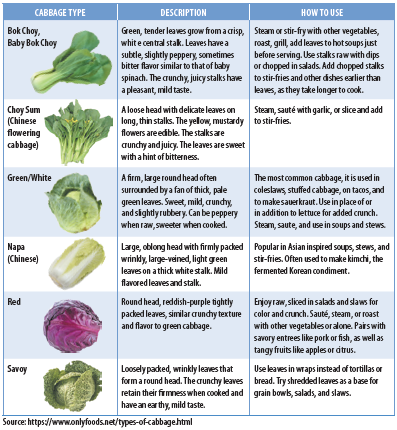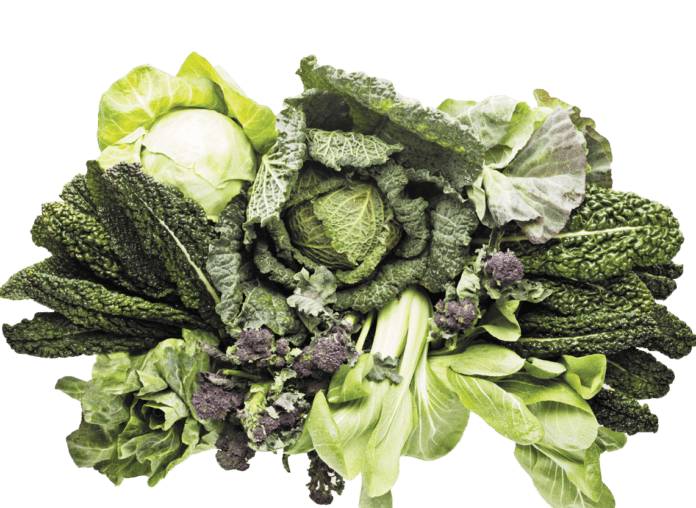There’s a lot more to cabbage than coleslaw and sauerkraut! This underutilized gem is a nutritious, versatile, accessible, and affordable addition to your diet. It has a long storage life and cooks up quickly.
Cabbage 101. Cabbages are in the plant family Brassica, the same family as kale, broccoli, cauliflower, and Brussels sprouts. One cup of raw green cabbage has about 22 calories, provides 54 percent of the recommended daily value (DV) of vitamin C, 85 percent DV of vitamin K, and more than two grams of dietary fiber. Like all plants, cabbages contain phytochemicals, compounds that are active in our bodies. The deep purple color of red cabbage, for example, is caused by anthocyanins, which act as antioxidants in the body.
Green cabbage is the most common type in the U.S., but there are many cabbage varieties in shades of red, white, and green in a range of sizes, shapes, textures, and flavors.
Buying and Storing. Cabbage should have fresh-looking leaves that are free from wilt or discoloration. Round head cabbages should feel heavy for their size.
Refrigerate cabbage in a plastic bag. Chopped or shredded cabbage (often sold as slaw mix), won’t last as long as whole heads. Spoiled chopped cabbage will release water and have a pungent odor.

Cooking with Cabbage. Extremely versatile, cabbage may be thinly sliced or shredded for use in slaws and salads, fermented in sauerkraut or kimchi, steamed, boiled, microwaved, roasted, sautéed, or stir fried. It can be used in soups, stews, and curries, wrapped around spiced ground meat (stuffed cabbage), and sliced into steaks or wedges and roasted, broiled, or grilled.
➧ Choose wisely. Uncut cabbage heads—particularly dense heads of red, white, or green—store for weeks in the refrigerator.
➧ Get creative. Ease cabbages into everyday dishes in place of tortillas or other wraps, as a crunchier lettuce alternative, or shredded in any dish for a dash of color and nutrients.
➧ Try new varieties. Swap varieties of cabbage to give a dish a color and texture twist.
All types of cabbage partner deliciously with most any other vegetable, whole grain, nut, or protein. Serve cabbage on its own, raw or cooked, with a tangy vinaigrette or favorite sauce or dressing. However you eat your cabbage, enjoy it knowing you’ve made a nutritious choice.
























